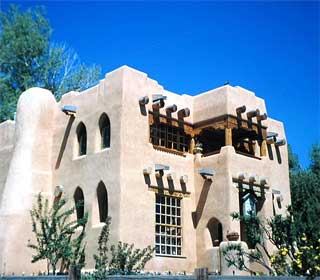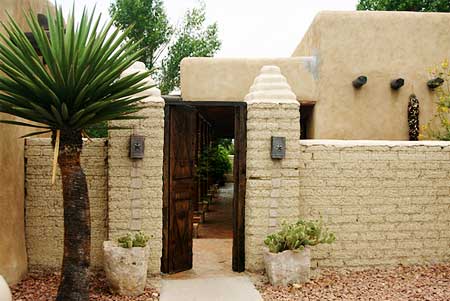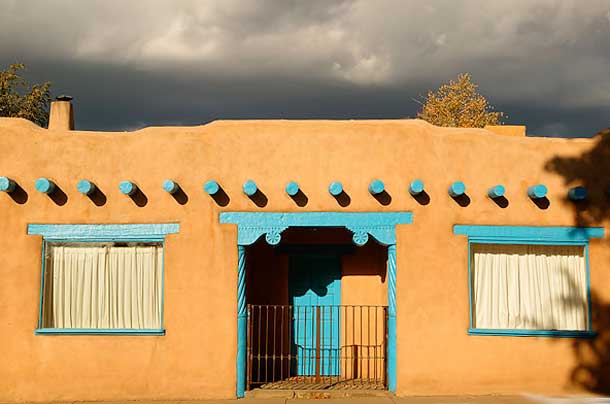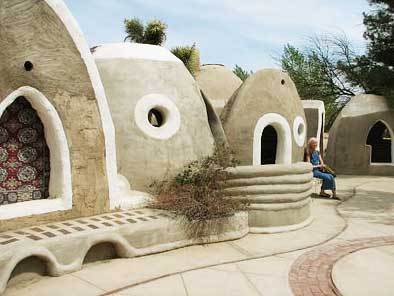Adobe Houses
Adobe or sun-dried mud is one of the most ancient and widely
used building materials which have gained immense popularity during
previous era due to its magnificent energy saving qualities. Because
of friendly as well as economic qualities, these houses create
a feasible environment for populations living in warm climatic
conditions with low humidity.
 Adobe House
Adobe House |
|
The adobe house building blocks are made with a blend of soil,
water along with straw. However, adobe mixture excluding straw
is more preferable as it acquires almost similar characteristics
to that of mortar.
The walls of mud-houses are capable enough to restrict less intense
sun rays and prohibit them to penetrate in to warm their inner
side and begin to transfer heat to the living space. Soon after
the sun is set, the temperature tends to drop in these particular
areas, and then the warm wall will continue to transfer the heat
to inner side for next several hours, having an influence from
time lag effect.
These environment friendly houses have a roof made up of a mixture
constituting soil/clay, water, sand as well as other available
organic materials which is further formed and pressed into wood
forms resulting in series of dried mud bricks that would then
be laid across a support structure of wood and plastered into
place with more adobe.
Scientific Grounds
A well planned and well-structured adobe wall house created with
most suitable raw material proportions and appropriate thickness
credits to be a most natural way to deal with the odd temperature
conditions. They are most effective to regulate the inside temperature
in areas observing fluctuations such as typical of desert climates,
a factor which has contributed to its longevity as a building
material.
 |
Feasibility
To avail the maximum adobe house advantages, it is suggested
to make them through proper planning by hiring an expert
having good knowledge about material mixing and their proportions.
Further, these houses are not well suited for all climatic
conditions; particularly geographical areas with higher
humidity as humidity weaken the adobe.
|
Pros
Ancient people, especially in tropical and other climates living
in tough environmental conditions boosted by hot sunny days and
cold nights, made best use of these structures to make their survival
possible, even under odd circumstances. They understood the fact
that these mud walls can act as a better heat reservoir due to
the thermal properties inherent in the massive walls typical in
adobe construction.
In addition, the exterior of an adobe wall can be covered with
glass to increase heat collection. In a passive solar home, this
is called a Trombe wall.
Cons
Besides various advantages, these houses have lost their charisma
in modern era because of higher care and maintenance demanded
as structures made up of mud or clay are particularly vulnerable
to deterioration.
In addition, another major drawback of these houses the high
cost of labor and lack of skilled professionals who deal with
building adobe houses.

All in all, though, adobe houses can be very green especially
if one starts with a straw bale house for the structure and covers
it with clay and mud. This can be a DIY project for those with
a little home improvement experience or it can be a family project
as well.
 |
Adobe houses don't have to be Old School
either. With a little imagination, you can go as modern
as you like.
|
Adobe doo bee doo!
|

